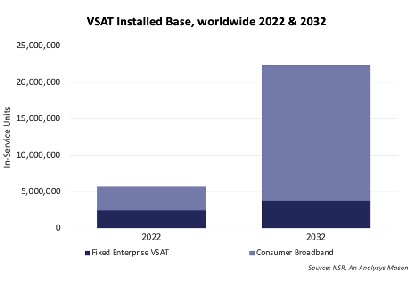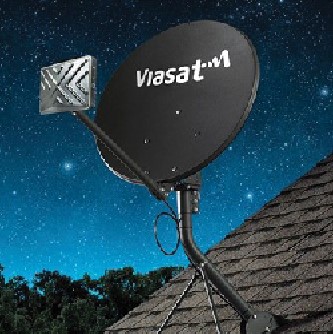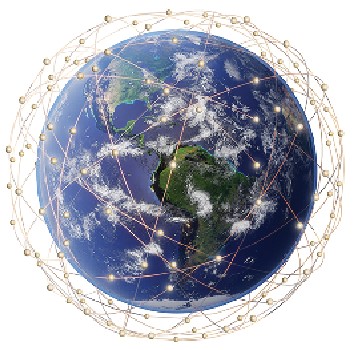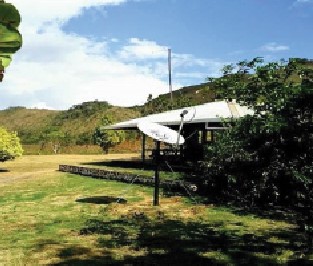Executive Roundtable on the Latin American Broadband Satellite Market
 |
Sao Paolo, Brazil, September 2, 2024--The Latin America broadband satellite market in 2024 is a Multi-orbit environment with a mix of Low-Earth, Medium-Earth and Geostrationary Orbits (LEO, MEO and GEO) Satellite operators offer a diversity of broadband satellite solution for this demanding market.Since we published in 2022 an article covering Latin America Broadband Satellite market, Starlink (LEO operator owned by SpaceX) started offering services and is now the main player in the LEO Constellations providing Internet and penetrating fast in Latin America both residential, business and maritime markets. As of May 2024, there are 6,078 Starlink satellites in orbit, of which 6,006 are working, according to Astronomer Jonathan McDowell who tracks the constellation on his website.
As of May 2024, SpaceX' Starlink satellite internet service has over 2.7 million subscribers across 75 countries. (We don’t have the exact number but we estimate around 15% of terminals of Starlink are based in Latin America). Starlink's user terminals, also known as consumer Starlink antennas, are sold to residential, business, mobile, maritime, and aviation customers. The price of a consumer Starlink antenna is US$ 599 for residential use in the USA but in Latin America Starlink has a lower price, while more demanding business customers may pay between US$ 2,500 and US $150,000 in the USA but Starlink to gain more market are lowering the price for enterprise clients in Latin America.
The other companies in LEO that is implementing solutions in the market at this time is EutelsatOneweb that starting deploying some Business-to-Business Solutions with some major Global solution providers in the region. (See more info in our roundtable)
Another major new player in the LEO coming to the market is Amazon's Project Kuiper that just announced during the month of June 2024 plans to jointly with telecommunications firm Vrio to launch a satellite internet service in seven South American countries. Vrio manages the Latin American branch of American multichannel video programming distributor DirecTV as well as direct broadcast satellite company Sky Brasil.
The partners will offer the service to customers in Argentina, Brazil, Chile, Uruguay, Peru, Ecuador and Colombia. The announcement reports that Amazon's satellite subsidiary Project Kuiper will provide internet using satellites in low Earth orbit. The service is set to come online in mid-2025, starting in Argentina.
Project Kuiper as a whole will eventually involve 3,236 satellites and an estimated US$10 billion of investment to provide broadband internet access across the globe.
In the GEO satellite we have Hughes and Viasat already in the market using their GEO Satellites fleet providing broadband solution for residential, business and enterprises markets. Historical in the Latin America GEO market we have the main Global Players: ABS, Hispasat/Hispamar, Intelsat, Telesat, SES and Regional Players ARSAT and StartOne.
NSR’s latest report on the “Consumer and Enterprise Broadband via Satellite, 22nd Edition” revealed that the consumer and fixed enterprise VSAT broadband segments are experiencing significant transformations, driven by evolving end-user demands, the infusion of innovative solutions, and a consolidating industry landscape The graphic below show worldwide the growth of Consumer broadband via satellite is a key element in the Satellite Broadband Business.
Governments in major countries in Latin America are continuing to support the satellite market to expand the penetration in remote and rural areas that are not being served by terrestrial networks with major plans are being implemented in Argentina, Brazil, Ecuador, Peru, Colombia, Mexico and some Caribbean countries.
Satellite Executive Briefing (SEB) invited executives from the key satellite players in the region in a virtual executive roundtable to shed light on the Latin American satellite broadband market. We received feedback from Juan Pablo, Regional Vice President, Americas, Eutelsat Group; Daniel Losada, VP International Division at Hughes; Dolores Martos, Regional VP Sales Latin America & Caribbean, Telesat; and Leandro Gaunszer – General Director of Viasat Brazil. Excerpts from the virtual roundtable are as follows:
How is your company addressing the Broadband Satellite Market in Latin America. (GEO, MEO and LEO)?
Eutelsat: Eutelsat Group is the world’s first GEO-LEO operator – we have a GEO fleet of 35 satellites and a LEO fleet of more than 600 satellites. Our combined satellite solution offers customers the high-bandwidth capabilities of GEO and the low latency and high-speed service from a LEO constellation. Together, these networks are delivering broadcast and connectivity services around the world.
In Latin America specifically, we already have a robust presence with our GEO satellites delivering a range of broadcast and connectivity services:
- EUTELSAT 117 West A. Provides hemi coverage in both C and Ku-band, as well as high-power regional coverage in Ku-band over North and South America.
- EUTELSAT 117 West B. Strengthens Eutelsat’s capacities offering key services to Latin America clients in the field of telecommunications mainly cellular backhaul in Mexico, Colombia and Perú and social inclusion broadband access to government services such us Pronatel Conecta Selva in Perú, including DTH. This satellite features four regional beams in Ku-band with exceptional coverage of each territory.
- EUTELSAT 115 West B. Provides satellite capacity to reach markets serving high-growth data, video, mobility, and government applications. Ku-band resources, connected to three fixed beams cover the Americas and provide optimized regional coverage of Canada, Mexico and South America for data services including broadband access, government connectivity for Ecuador and Colombia and corporate networks. A semi-hemispheric C-band beam provides groundbreaking coverage from Alaska to Peru particularly for enterprise, backhaul over Galapagos Islands in Ecuador and mobility services over the Pacific Ocean.
- EUTELSAT 65 West A. Its high-power Ku-band payload enables DTH reception of digital and HD channels across Brazil and the Caribbean region. It provides a unique solution for live TV transmissions from Brazil. It also features a transatlantic C-band coverage for cross-continental video contribution and distribution and a multi-spotbeam Ka-band payload for broadband access across Brazil, Mexico and Perú.
Our LEO constellation, is also commencing services in the region, enhancing connectivity with low latency and high-speed internet bundling to our GEO offer.
Hughes: Hughes enables universal connectivity, from internet access for homes and rural communities to sophisticated multi-transport enterprise networking, and secure defense communications, to a global, converged satellite-terrestrial 5G network. We provide broadband equipment and capacity; managed services featuring smart, software-defined networking; and end-to-end network operation for millions of consumers, businesses, governments, airlines, and communities worldwide.
Realizing the connected future requires multiple orbits and types of transport, combined with intelligent and enabling technologies, fully integrated into services and solutions. For Hughes, these include a fleet of geostationary satellites based on the JUPITER system technology, including JUPITER 3, the world's largest commercial communications satellite launched in 2023, a LEO constellation in partnership with OneWeb, 5G networks, and LEO 5G-NR-NTN capacity.
Hughes' Jupiter-3 satellite
JUPITER 3 is the highest capacity and performance satellite that Hughes has launched, doubling the capacity of the current fleet. With 500 Gbps capacity, we can serve more customers and give current customers a better experience across the Americas. This capacity supports customers across a wide range of verticals, including consumer, enterprise, aeronautical, maritime, government, cellular backhaul and it also enables our continuing efforts to bridge the digital divide.
With Hughes LEO managed service we deliver reliable, low-latency, enterprise-grade service. Available for global mobility services, businesses, government, and defense application, cellular backhaul and digital divide programs, across the Americas, India and globally. A key advantage of the Hughes and OneWeb solution is the availability of service level agreements (SLAs), which means the customer is not left with a best effort service that competes with general user usage on consumer grade LEO services.
Satellites in service today:
- JUPITER 3: coverage in North, Central and South America - Orbital position of JUPITER 3: 95°W
- JUPITER 2: coverage into Colombia and Mexico. - Orbital position of JUPITER 2: 97.1°W
- Hughes 65°W (hosted payload on Eutelsat 65°W): coverage into Brazil
- Hughes 63°W (hosted payload on T19V): coverage into Brazil, Colombia, Ecuador, Chile, Peru and Argentina
- Hughes 20°W (Brazil payload on Al Yah 3): coverage into Brazil
Telesat: Telesat is proud to continue our longstanding collaboration with customers in Latin America. Our connectivity solutions are helping to solve this growing region’s most complex communications challenges, improving operations for the providers that are linking the continent to enable development and growth.
We are working with our partners in Brazil, Colombia, Peru and Venezuela to deliver very high throughputs at a lower cost-per-bit for backhaul, enterprise, oil & gas and government applications. This is enabled through the innovative design of Telesat’s Telstar 19 VANTAGE satellite and its high-power Ku-band spot beams. The high throughput spot (HTS) beams, combined with regional C & Ku-band beams, provide the optimum coverage to connect all corners of the continent, including the insular and coastal areas.
Telesat is also providing resilient, reliable GEO capacity to support multiple universal connectivity programs that address the digital divide in rural areas throughout Latin America. These include Telefónica’s Peruvian connectivity initiative Internet para Todos (IpT), the Colombian Ministry of Telecommunications’ (MinTIC) Centros Digitales, and Brazil’s Caixa Economica Federal program to bring connectivity to bank offices in remote locations.
When our highly advanced Telesat Lightspeed LEO constellation, currently in development, begins deployment in 2026, it will provide even greater capabilities for Latin American enterprises to leverage. Telesat Lightspeed will deliver cost-effective, fibre-like connections with lower latency and higher data rates, thanks to the constellation’s closer proximity to Earth than today’s current GEO satellites. Telesat Lightspeed will provide superior connectivity with 30-50 millisecond latency and multi-Gigabit per second speeds, with committed information rates and guaranteed SLAs.
Viasat: Viasat is strategically positioned to address the broadband satellite market in Latin America using a combination of GEO, MEO, and LEO satellites. Currently, we operate a fleet of 19 satellites in orbit, covering the Ka, L, and S bands. With the acquisition of Inmarsat, we have significantly enhanced our network capabilities, including GEO satellites that provide wide coverage and high capacity.
Our latest launch, the ViaSat-3, is part of a Ka-band satellite constellation designed to cover almost the entire planet. Despite the detected anomaly, ViaSat-3 is operational and delivering high-speed connectivity, particularly for aviation. Additionally, we have 11 satellites on order or in production, including two Highly Elliptical Orbit (HEO) satellites for connectivity in polar regions.
Our services in Latin America include residential broadband plans with speeds up to 35 Mbps download and 3 Mbps upload, as well as solutions for aviation, government, and businesses. Viasat also offers connectivity through partnerships, such as our collaboration with Telebras in Brazil, to operate the SGDC-1, ensuring 100% coverage across the Brazilian territory.
What country(s) or region(s) in Latin America are you expecting more potential long-term growth in the next 2-5 years?
Eutelsat: Connectivity demands are soaring around the world and this is true in Latin America as well. We see long term growth in a number of areas including Mexico, Brazil, Colombia, Ecuador, Argentina and Peru, which are key markets for the development of connectivity solutions in which our LEO fleet will have an important role within the next 2-5 years.
Hughes: At Hughes, we are committed to offering a more accessible service that contributes to the democratization of internet access in Latin America, which has a positive impact on the social and economic development of the region, by promoting education, trade, business, and the productivity of people and companies.
In recent years, we have been working in Latin America to bring broadband internet where other technologies have not been able to reach, operating and connecting countries throughout the region, and prioritizing its most underserved areas.
We have connected more than 34,000 rural schools - for example, almost 9,000 in Colombia with some ecosystem allies, thousands of corporate sites with managed services, and 4 satellites for the region with one more under construction.
In Latin America, we own satellites that allow us to provide terrestrial segment infrastructure and operate a mix of broadband services for consumers and businesses. Also, HughesNet has nearly 400,000 subscribers in seven countries: Brazil, Chile, Colombia, Ecuador, Mexico, and Peru. In addition, more than 2,500 access points to our community Wi-Fi, HughesXpress Wi-Fi, provide shared Internet access to thousands of people.
Telesat's Lightspeed Constellation
Telesat: We see exponential growth opportunities across the entire Latin America region. Multiple national governments have officially recognized a constitutional right to internet access, leading to IP data traffic forecasted to double every three years. 5G and the required spectrum allocation will play a critical role in driving that exponential growth, which is expected to reach over 35 GB mobile data traffic per smartphone each month. Brazil, Chile, Colombia and Uruguay are already seeing accelerated 5G adoption, with more countries soon to follow. As governments award 5G spectrum, many do so on the condition that the telecom operator expands connectivity to rural and remote regions.
Satellite backhaul will be key to expand the 5G network reach in remote locations. Traditional fibre backhaul connectivity will be prohibitive due to the high cost of installation across Latin America’s challenging geography. The next-generation Telesat Lightspeed LEO constellation offers an alternative for bringing multiple-Gbps data links to remote Latin American communities, with fibre-like performance at far lower cost.
Viasat: In the next 2-5 years, we see significant long-term growth potential in Brazil and Mexico. These countries are pivotal to our expansion strategy in Latin America due to the ever-increasing demand for high-quality connectivity. In Brazil, our pioneering coverage with Ka-band satellite and partnership with Telebras uniquely position us to expand our presence in both urban and remote areas, providing high-speed internet access to millions of Brazilians.
In Mexico, we are heavily investing in infrastructure and new technologies, such as D2D connectivity, to meet the connectivity needs of rural regions and key sectors like agriculture and automotive. These efforts, combined with our global investments in fixed broadband (GFB), will not only solidify our leadership position but also drive economic and social development in these markets, ensuring robust and sustainable growth in the long term.
Do you have any specific solutions for the Enterprise/Government and Residential market for Broadband via satellite (ie., OTT, IOT, DTH, Internet direct to user, Backhaul, Aviation, Maritime or others)?
Eutelsat: At Eutelsat Group, we have a business-to-business approach and we offer our GEO-LEO services through a wholesale model. Our customers are local providers including satellite companies, telecommunication companies and internet service providers who take our services and integrate them into their offering – extending broadcast services to homes in rural areas or delivering connectivity to businesses and local governments where terrestrial options are not available or resiliency and redundancy is paramount.
Our connectivity services are targeted to meet a range of customer needs including enterprise solutions such as community wifi and cellular backhaul as well as mobility solutions to offer connectivity on trains and vehicles. We are also connecting ships onshore and offshore and in the coming year will launch our aviation services as well.
Regarding our video services, the latest advancements in satellite streaming solutions, specifically based on the DVB-NIP standard, are designed to support companies and governments focusing on the Ministries of Education and of Health to distribute content effectively and efficiently via Native IP. This innovative approach will significantly benefit rural areas by enabling seamless IP Native content distribution and facilitating efficient file transfers
Hughes: Hughes is global managed services provider (MSP) that supports over half a million enterprise sites with enterprise technology solutions, which includes Managed Network Services, Digital Signage and cybersecurity. We have been recognized by industry analysts as a leader and an innovator, with more than 50 years of experience.
Hughes provides the technology and managed services that aid enterprises to secure, transform and grow their businesses. Hughes was named a 2023 Leader in the Gartner® Magic Quadrant™ for Managed Network Services.
We offer a suite of in-flight connectivity (IFC) solutions for commercial aviation and government/military applications for over 20 years, leveraging cutting-edge satellite engineering and proven expertise in managing networks at scale. Our offerings include the latest LEO-only and hybrid capabilities on the market, leveraging the small, lightweight, low-power ESA developed and manufactured by Hughes.
Hughes operates the world’s leading satellite broadband system, Hughesnet®, connecting people across the Americas. We offer Hughesnet to small business and residential customers in the U.S., Canada, Brazil, Chile, Colombia, Ecuador, Mexico and Peru.
Telesat: For over 55-years, Telesat has been delivering enterprise-class satellite connectivity to leading media,
telecom, government, maritime and aeronautical customers throughout the world. Our business model is built around working with local telecom operators, service providers and governments to expand the reach of their networks. We provide backhaul connectivity as well as enterprise and DTH residential services via our existing GEO satellites. We will follow the same business model with Telesat Lightspeed. Our Telesat Lightspeed satellites will begin launching in mid-2026, with service trials beginning in 2027, and full global service available in late 2027.
 |
|
Viasat: Yes, Viasat offers a wide range of specific solutions to meet the needs of the Enterprise/Government and Residential markets in the satellite broadband sector. For the residential market, we provide high-speed internet plans with 100% coverage across Brazil, offering speeds of up to 35 Mbps download and 3 Mbps upload. These services are ideal for users in rural and remote areas who lack access to other forms of connectivity.
In the enterprise and government markets, our solutions include connectivity for aviation, with partnerships with airlines such as Azul and Embraer, and maritime services for ships and vessels. Additionally, we provide backhaul for telecommunications operators, supporting the necessary infrastructure to expand mobile and fixed network coverage. We also offer IoT (Internet of Things) solutions for agriculture and industrial automation, enabling remote monitoring and control of devices in hard-to-reach locations.
Our OTT (Over-the-Top) and DTH (Direct-to-Home) solutions allow for the digital content delivery directly to end consumers without the need for terrestrial infrastructure. Viasat is also exploring D2D (Direct-to-Device) connectivity to provide internet access directly on mobile devices, further enhancing our ability to connect people and businesses throughout Latin America.
With the implementation of 5G in Latin America, what kind of solution are you bringing to the market to address this development with the local operators in the Region?
Eutelsat service in Guyana
Eutelsat: To address the implementation of 5G in Latin America, Eutelsat Group has been supporting, through our partners, key MNO´s in the Americas to deploy their 3G, 4G and even 5G networks. Our LEO fleet will play an important role in 5G rollout enabling low latency and high throughout requirements.
For our Video Business, the deployment of 5G technology is impacting C-Band distribution services across Latin America in several ways. In Brazil, broadcasters are grappling with the challenge of maintaining their DTT distribution networks via satellite amidst the expanding presence of 5G.
Similarly, countries like Peru and Uruguay are reallocating up to 100 MHz of traditional C-band for distribution, which limits their regional reception capabilities. Without question, the reallocation of C-band frequencies, particularly around the 3.5 GHz band and above for 5G networks, poses a risk of signal reception issues for satellite dishes, potentially causing interference both in and out of band.
Therefore, the EUTELSAT 65 West A satellite, offers a robust solution for broadcasters to avoid 5G interference. This satellite provides planned C-band capacity that ensures interference-free transmission for TV signals across the region, providing a reliable and secure broadcasting solution for the future.
Hughes: As providers gradually roll out the extended 5G network, satellite will be essential to fulfilling the requirement of the 5G Public Tenders to reach underserved areas. Rugged terrain and far-flung communities can be cost prohibitive to connect with terrestrial backhaul when considering infrastructure, maintenance, and reliability. To address these gaps, only high-throughput satellite communications can most cost effectively bring equity and narrow the digital divide to connect cellular voice and data to the core network. As mobile network operators shift their focus from saturated urban and suburban service locations to find new customers in remote locations, extending network reach with satellite is a clear choice.
Hughes technology powers over 12,000 cellular backhaul sites (2G, 3G, and 4G/LTE) worldwide, including Telefónica Perú, Vodacom, Entel Bolivia, and Turkcell. The JUPITER system supports what we believe is the world's largest Layer 2 cellular backhaul deployment for the BAKTI program in Indonesia.
Hughes has successfully conducted 5G satellite backhaul tests with the JUPITER™ System ground platform. In these tests, engineers connected 5G smartphones to the internet with the JUPITER System infrastructure, which includes a very small aperture terminal (VSAT), a gateway, and a high-throughput satellite.
Telesat: 5G holds tremendous promise for enhancing connectivity reach and bandwidth for enterprises and end users. Robust connectivity is needed to accommodate the delivery of 5G’s significant backhaul-traffic and fronthaul-network segments that will connect remote Latin American communities to a mobile operator’s core network. Achieving that level of terrestrial connectivity can be slow and costly, especially when extending to rural locations.
Telesat’s current GEO-based HTS capacity already serves Latin America’s evolving 5G backhaul requirements. Moreover, our highly advanced Telesat Lightspeed network will provide multiple-Gbps of low-latency capacity to meet 5G backhaul requirements while enabling telecom operators to buy satellite service in the same way they would buy any other carrier Ethernet service.
The Telesat Lightspeed satellite network is unique; unlike other LEOs designed for consumers, we have created a satellite-based, optically-linked wide area Layer 2 Ethernet network. It’s a fiber-like Ethernet connection with a Service Level Agreement (SLA) that guarantees committed information rates (CIR), including latency, jitter, and packet loss. It’s compliant with MEF 3.0 Carrier Ethernet service and relies on the same Ethernet protocol that carriers use, so is simply an extension of their existing infrastructure. Telesat LightSpeed carriers can easily backhaul to remote locations where fiber or microwave is not economically viable to deploy. Because Telesat LightSpeed connects their towers by Ethernet-compatible protocol, it doesn’t matter if it’s 3G, 4G, or 5G traffic. We carry those protocols at Layer 2 over our satellite network.
Viasat: With the implementation of 5G in Latin America, Viasat is bringing innovative solutions to support local operators in developing this new technology. One of our key offerings is satellite backhaul, which provides the necessary infrastructure to connect 5G networks in areas where fiber optics and other terrestrial technologies are impractical or too expensive. This solution allows operators to rapidly expand their 5G networks, ensuring high-speed and low-latency connectivity.
In addition, soon in Latin America, we will explore D2D (Direct-to-Device) connectivity to complement 5G networks, offering direct internet access via satellite on mobile devices. Viasat is also collaborating with local operators to integrate our IoT services, enabling the connectivity of smart devices in areas where 5G is being implemented. These combined solutions help accelerate 5G adoption in Latin America, ensuring that more people and businesses can benefit from this advanced technology.
--------------------------------
 Bernardo Schneiderman is the Principal of Telematics Business Consultants. He can be reached at:
Bernardo Schneiderman is the Principal of Telematics Business Consultants. He can be reached at:
info@tbc-telematics.com








